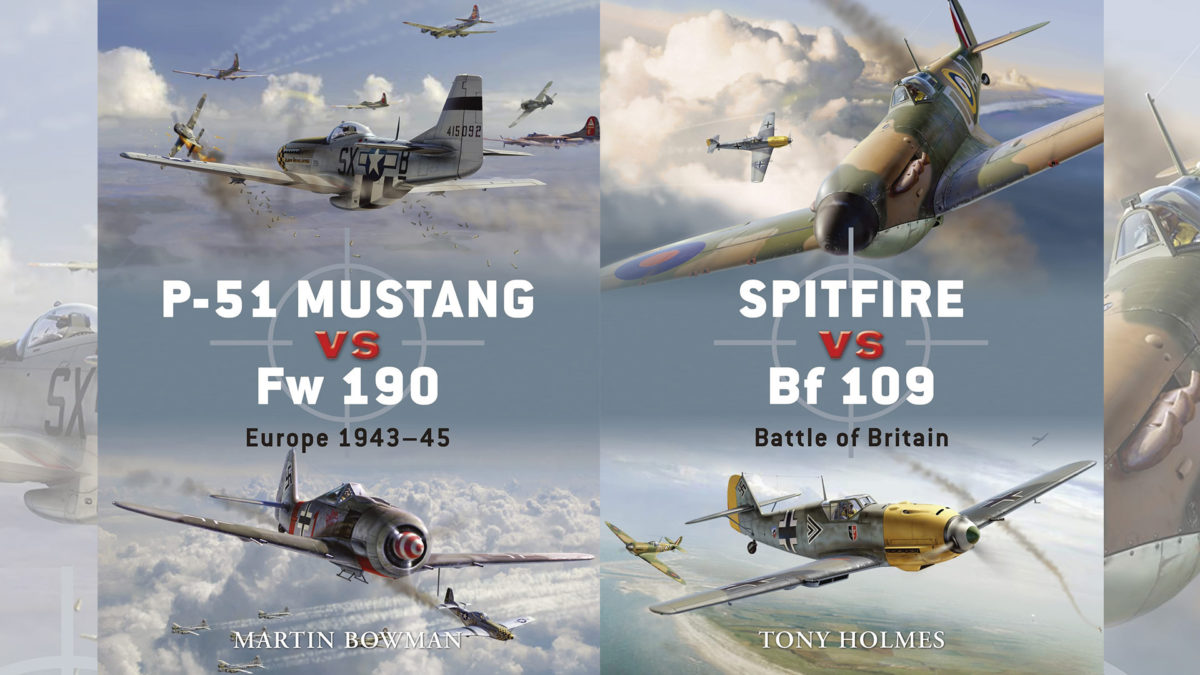P-51 Mustang vs Fw 190, Europe 1943-1945 by Martin Bowman, Osprey Publishing, Oxford, England, 2007, $17.95.
Spitfire vs Bf 109, Battle of Britain by Tony Holmes, Osprey Publishing, Oxford, England, 2007, $17.95.
In an interesting new spinoff of its New Vanguard series, Osprey Publishing has launched “Duel,” a series comparing two rival weapons and the men who used them in combat. Opening the series is P-51 Mustang vs Fw-190, Europe 1943-1945, in which Eighth Air Force expert Martin Bow – man parallels the development and performance of the North American and Focke Wulf fighters; describes the training, doctrine and tactics of their pilots; and traces how those factors played out in WWII’s last two years.
This first pairing is not entirely a perfect match, because the Mustang was essentially superior to the Fw-190A, especially at higher altitudes, where the Germans had hoped their Messerschmitt Me-109Gs would keep the P-51s sufficiently occupied to allow the heavily armed and armored Fw-190As to perform their primary mission: blast through bomber formations. A good Fw-190A pilot could still take out a P-51D if its pilot was green or too cocky, but, as Bowman points out, by mid-1944 attrition was whittling away Germany’s cadre of Experten, while the next generation of American fighter pilots was better trained than their hastily turned out Luftwaffe counterparts. Perhaps because those factors are as well known to any WWII scholar as they are to the author, his conclusion seems curiously inconclusive.
In comparison to the first book, one would be hard pressed to find a closer matched pair of adversaries than those in No. 5 in the series, Spitfire vs Bf-109, Battle of Britain. When they first met over Dunkirk in late May 1940, the Supermarine Spitfire Mark I and Messerschmitt Me-109E were the best fighters in the world, and in the months that followed each exhibited strengths and weaknesses that a canny pilot could exploit. For example, the Spitfire was more maneuverable, especially at low speeds, where the Me-109’s higher wing loading might cause it to lose altitude or fall into a spin. On the other hand, the Spit’s carburetor might fail while inverted or in sustained wild maneuvers that would not affect the 109’s fuel-injected Daimler Benz DB 601 engine.
The RAF pilots also had to learn their trade fast against German veterans of campaigns in Poland, Scandinavia, the Low Countries and France—and the RAF’s tightvic formations were no match for the Luftwaffe’s more flexible “Finger Four” tactics. The relatively short ranges of both fighters proved a particular handicap to the Germans, who had to escort their bombers over Britain knowing that their loiter time was limited to only 20 or 30 minutes. Not surprisingly, Tony Holmes, who is also an editor of the series and a longtime scholar of the Battle of Britain, knows just how to make his comparisons and draw his conclusions in this epic aerial death-match.
Illustrations by Jim Laurier and Mark Postlethwaite supplement the photos, including views of the cockpits, armament and through the gunsights. These enhance the text, which livens up the statistics with accounts of combatants from both sides.
Originally published in the May 2008 issue of Aviation History. To subscribe, click here.





